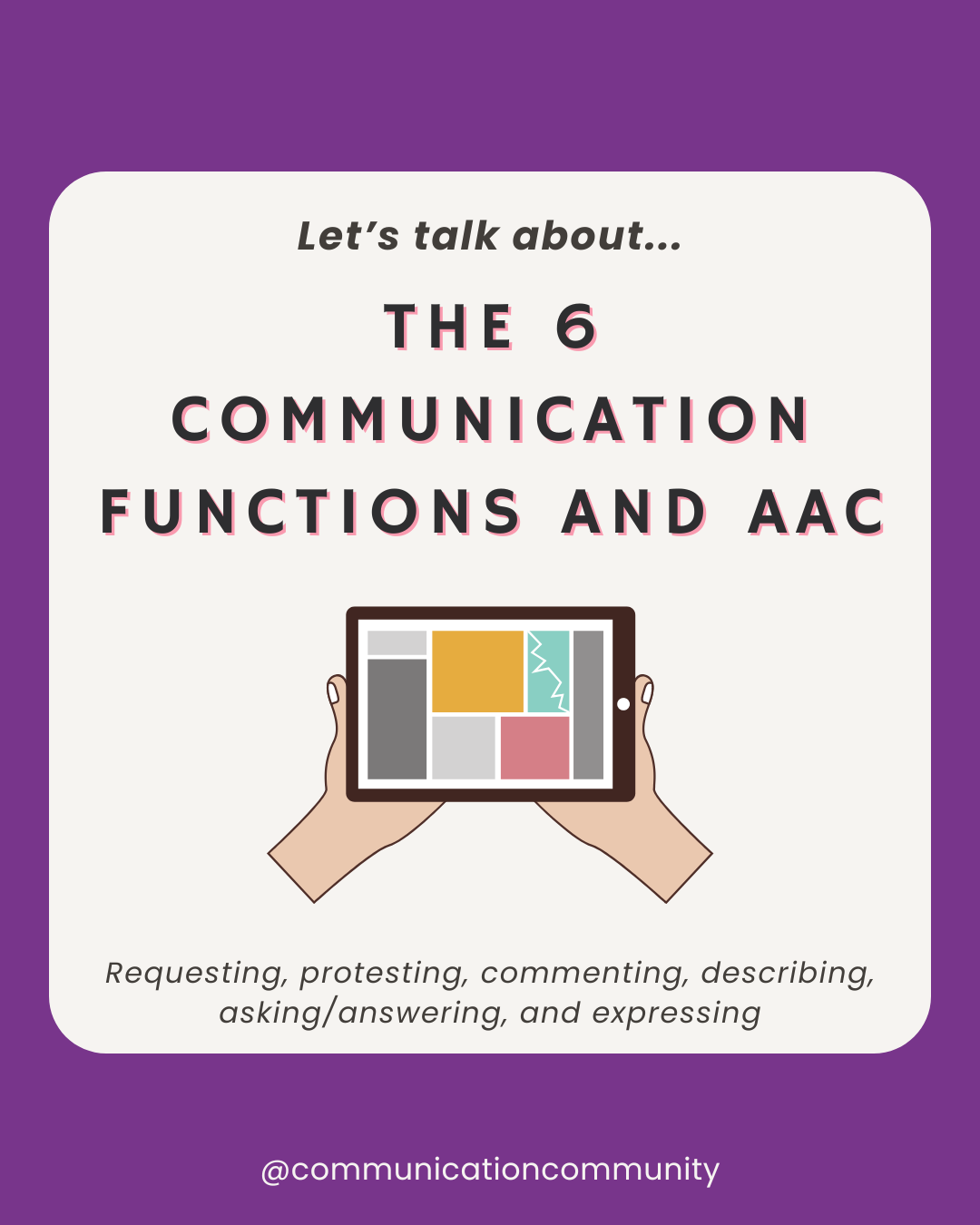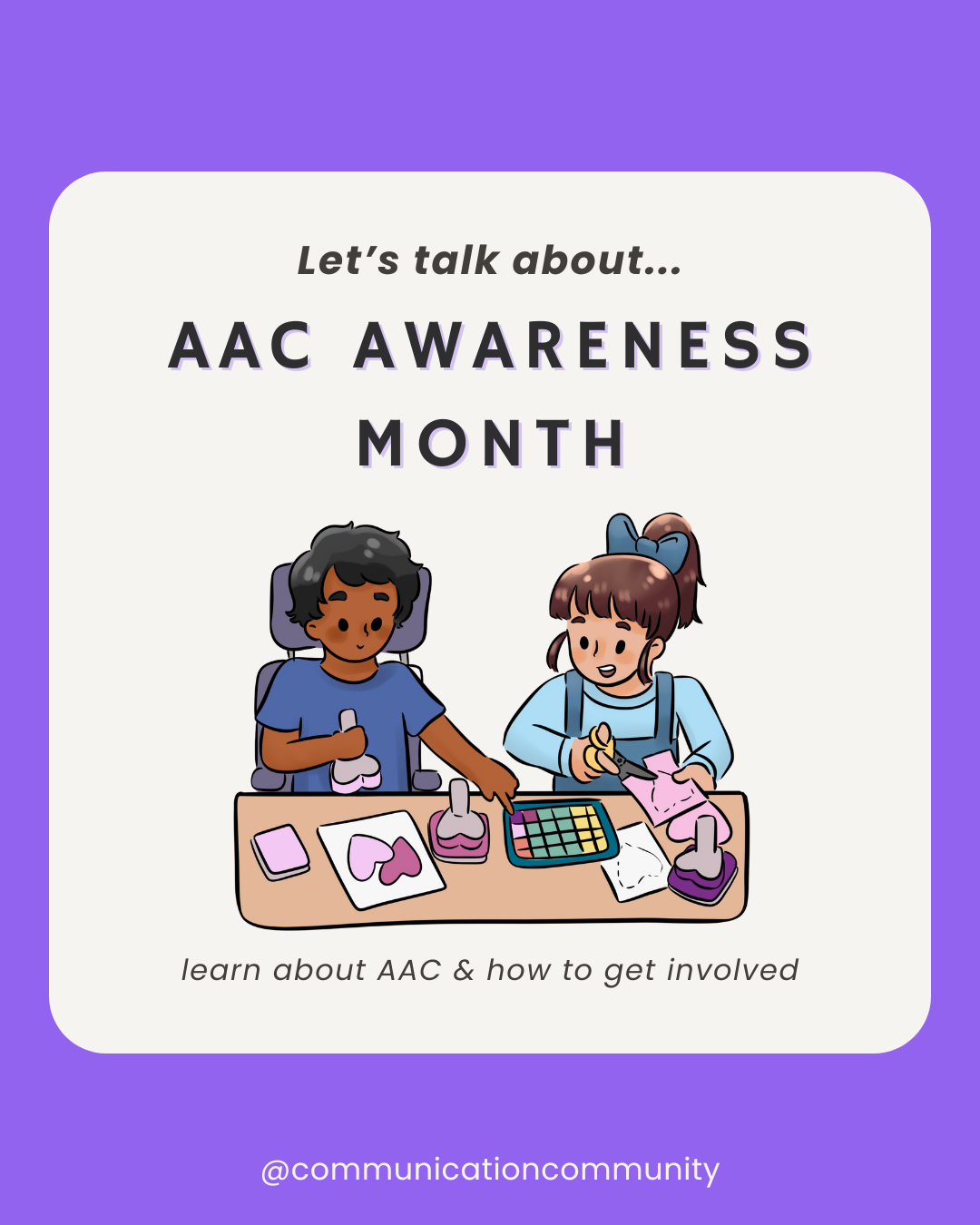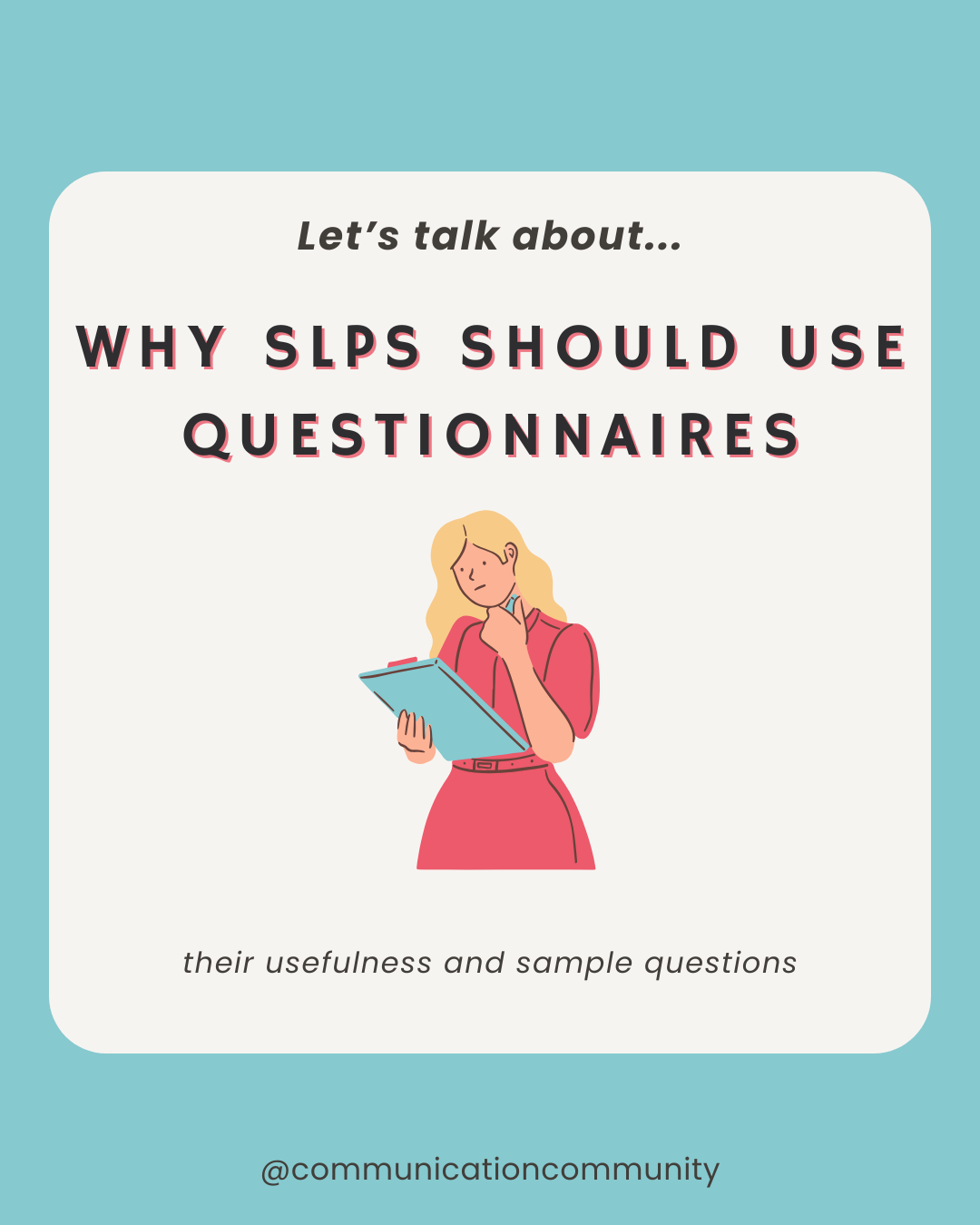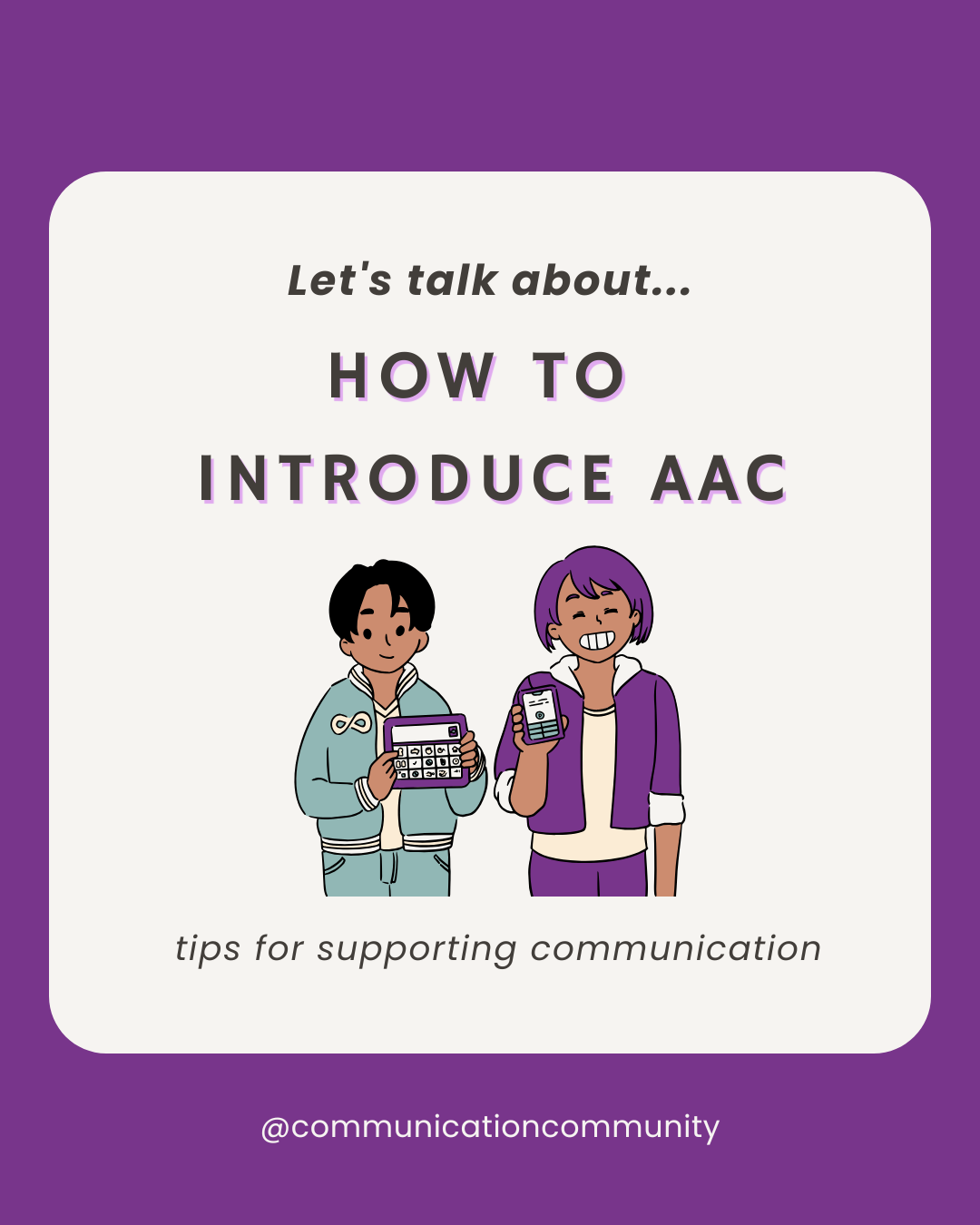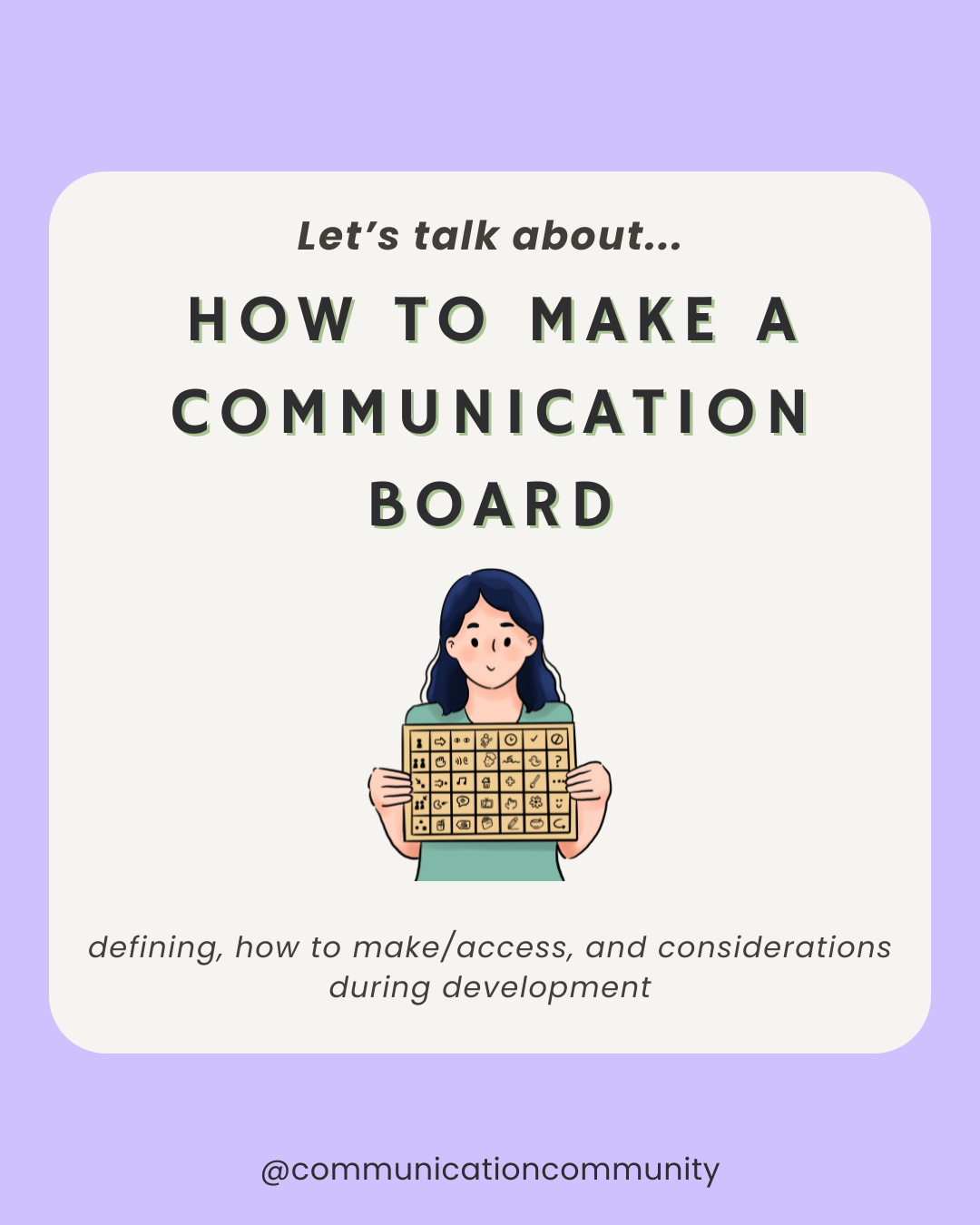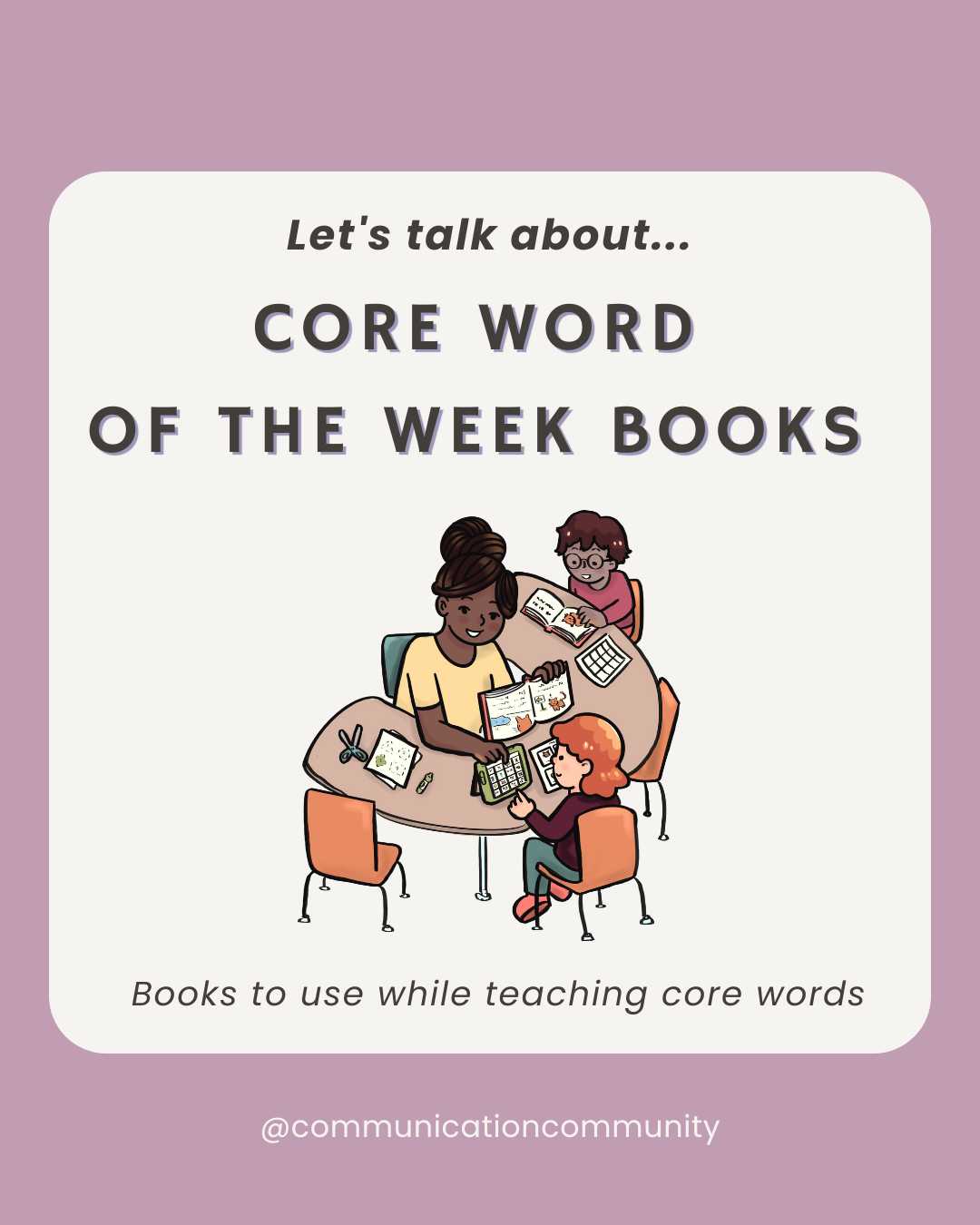All individuals communicate about a range of topics in their day-to-day life. They form and maintain relationships with others, discuss their likes and dislikes, and ask and answer questions. Individuals who use AAC systems are included in this as well, which is why providing opportunities for them to develop these skills and having the language on their systems is important. There are six broad ways we communicate, which may be considered communication functions.
1. Requesting
Requesting may include requesting a preferred individual, activity, food/drink, attention, or need. We request things all day long, such as help to complete a task, a specific type of coffee we want, or an individual with whom we want to communicate. We request the television shows we want to watch, the places we want to go to, and the games we want to play. We request attention from parents or caregivers, or friends and partners.
2. Protesting
Just as we request things all day long, we also protest, or reject, things that we do not want. We may reject a food we do not want to eat, a toy we do not want to play with, or a chore we do not want to do. We protest seeing someone we do not want to see or engaging in an activity when we are tired. Though protesting is not always a viable or appropriate option (such as skipping work or school), we are still able to communicate it.
3. Describing
Describing includes labeling things we see or explaining objects, wants, desires, and more. We may label the items we need to get at the grocery store, or the books we have on our bookshelf. Describing and labeling increase the variety of our communication abilities; when requesting a specific kind of coffee, we may describe the specific things we like inside of it, like a splash of 2% milk and a teaspoon of sugar.
⭐ Looking for additional AAC resources and support?
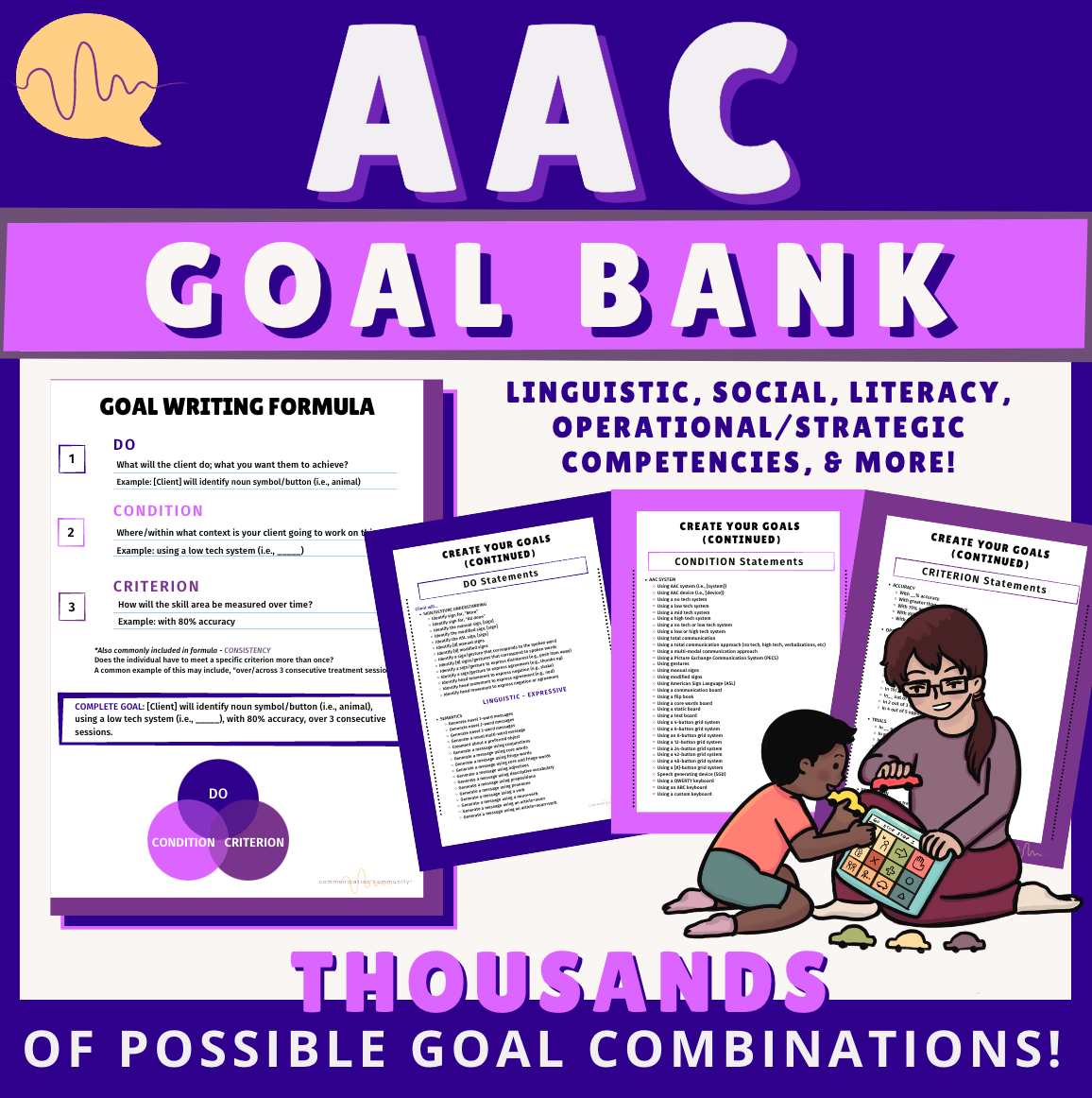
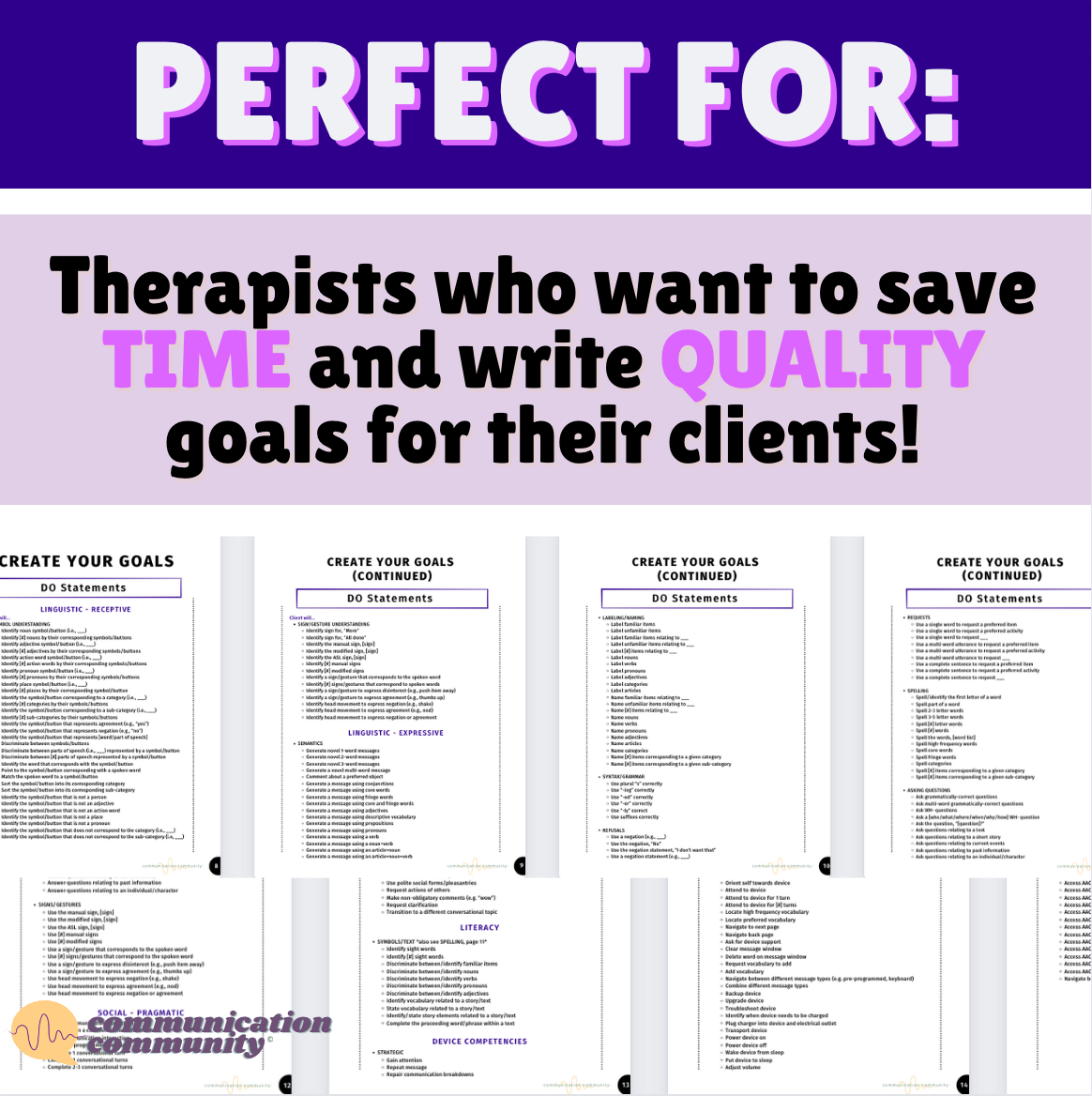
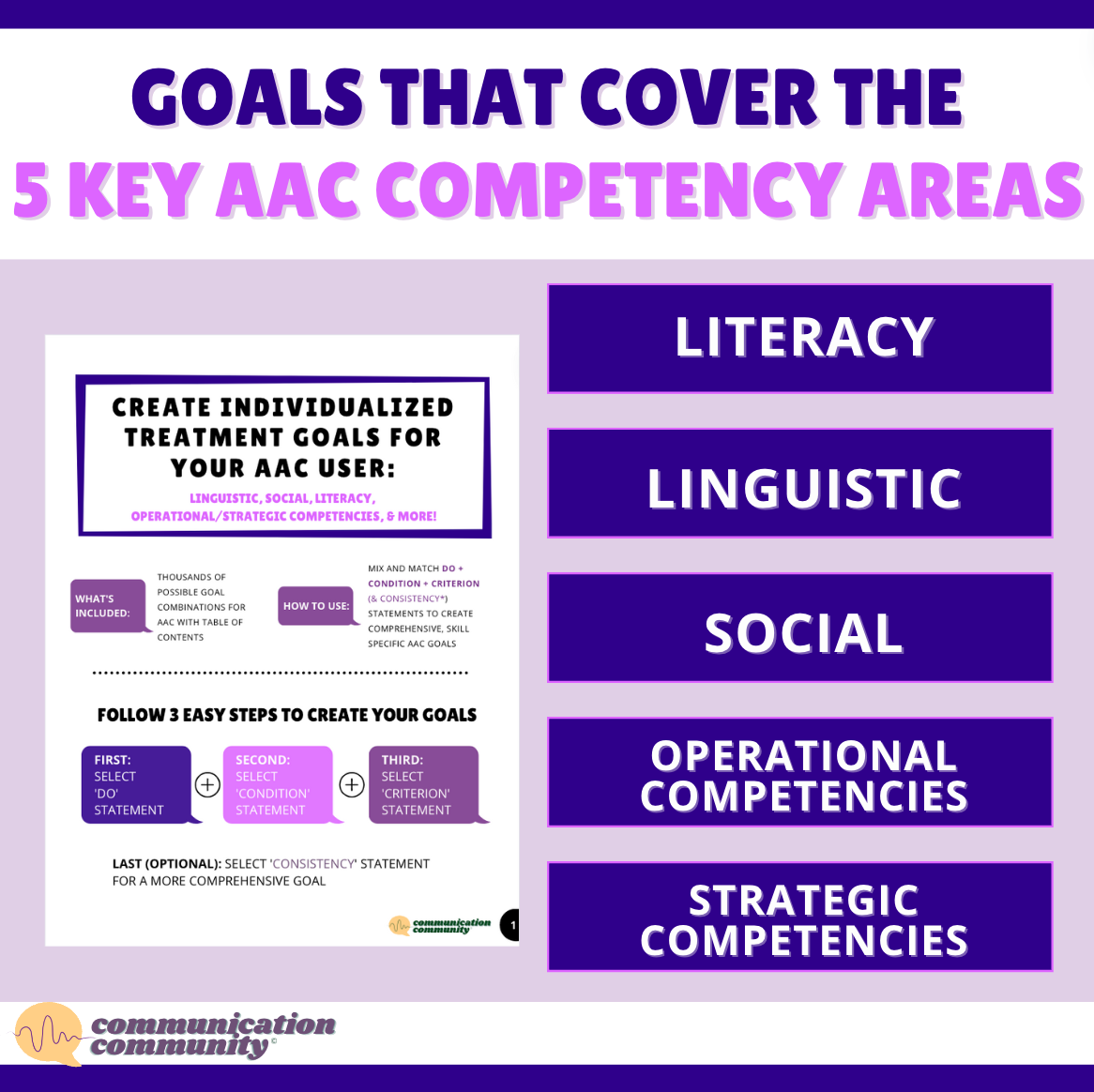
Create measurable and individualized AAC speech therapy goals for your school-aged or adult clients with this top-selling, time-saving resource.

Also available for individual purchase through our TPT and Gumroad stores!
4. Asking and Answering Questions
Asking questions includes the “5 Ws:” who, what, where, when, and why, along with “How…,” “Can…,” “Do…,” “Are you…,” yes/no, and more. When we ask questions, we are able to learn more about a topic of interest, which may include a setting, a person, an activity, or an idea. When someone asks us a question, we can answer it and provide information to them. The sharing of thoughts and ideas is increased when asking and answering questions and can be a large part of communicative exchanges between individuals.
5. Commenting
Commenting is also a social interaction, which includes communicating about things that we see, experience, or feel. For example, we may take a sip of coffee and say “yum,” or see a huge bubble come out of a bubble wand and say, “big” or “wow.” We may comment on an activity we like or a TV show that we do not like. Commenting can also include providing information on something, such as sharing about a sport we like to play.
6. Expressing Feelings
Expressing feelings includes physical or emotional states, such as happy, tired, excited, bored, or in pain. If we are feeling sick, we can describe the specific ways we feel sick, such as having body aches or feeling nauseous. If we are in pain, we can describe where the pain is, such as the head, and how the pain feels, such as dull or throbbing. If we are excited, we can explain why we feel excited.



Summary
As you may have noticed, many communication functions overlap. For instance, you might express feeling pain while answering a question and then protest something you don't want or can't do. You could comment on something you enjoy and then request to do it again because it makes you happy. We use these communication functions constantly throughout our day, so it’s crucial to provide individuals learning to use AAC devices with similar opportunities.
It’s important to note that while selecting vocabulary for AAC devices should be systematic and intentional, there are NO prerequisites for AAC use. Other considerations include the communication skills individuals already have and what is important to them and their families/caregivers. For example, someone with acute medical needs, such as a person with a brain injury who uses supplemental oxygen, must be able to communicate about medical needs, like when their oxygen tank needs replacing.
Including vocabulary on AAC devices that enables individuals to use all communication functions is key. This ensures that language and communication extend beyond simply requesting desired objects or attention, supporting more meaningful and comprehensive interactions.
References/further resources:
http://autismclassroomresources.com/communicative-functions/
https://cornerstoneautismcenter.com/resources/functions-of-communication/
Beukelman, David R., and Pat Mirenda. Augmentative and Alternative Communication: Supporting Children and Adults with Complex Communication Needs. Paul H. Brookes Pub., 2013.

